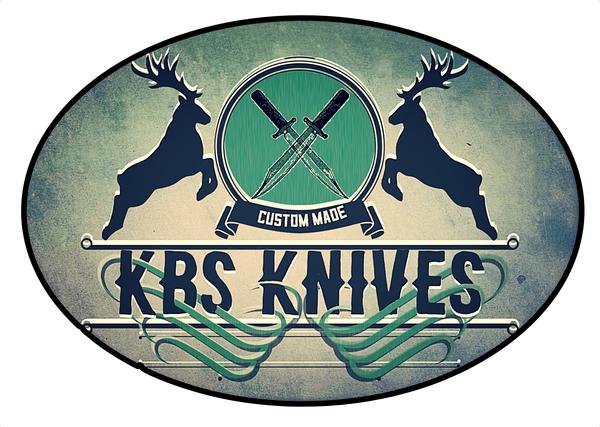Is It Illegal to Carry a Knife? Understanding Knife Laws in the U.S.
Share
Is it illegal to carry a knife? The answer depends on your state knife laws, the knife type, and where you’re carrying it. In the U.S., carrying a knife can be perfectly legal—or a serious offense—depending on blade length, knife style, and location restrictions. This guide explains everything you need to know about restrictions on carrying knives, including fixed blade knives, automatic knives, and concealed carry rules.

Why Knife Laws Are Complicated
Unlike firearms, state knife law regulations vary dramatically. A knife that’s perfectly legal in Texas might be illegal just across the border in California. There are no federal knife size standards—only state and local laws define what counts as a “legal knife.”
Factors that affect legality include:
-
Blade length (e.g., legal limit for carrying a knife in public)
-
Opening mechanism – manual, assisted, or opens automatically by hand pressure
-
Purpose (utility, hunting, self-defense)
-
Concealment – whether you’re carrying a concealed knife or openly displaying it
-
Location – schools, airports, or federal buildings often have total bans
Legal Knife Blade Length and Size Limits
A top question is: “What’s the legal size for carrying a knife?”
Most states set limits between 2.5 to 4 inches for public carry. Anything longer might fall under restrictions on carrying knives or require special permission.
Examples:
-
California: Concealed automatic knives with blades over 2 inches are illegal. Larger fixed blade knives can be carried openly.
-
Texas: Allows any length for most knives—no general restriction.
-
New York: Folding knives under 4 inches are typically allowed, but local ordinances differ.
So, is it illegal to carry a knife over 4 inches? Usually, yes—unless used for specific purposes like hunting or work.
Are Pocket Knives Legal to Carry?
If you’re asking, “Can I carry a pocket knife?” or “Is it illegal to carry a pocket knife?”, the answer depends on where you live.
Most states allow manual folding knives under the legal length limit. But carrying a concealed knife could be prohibited even if the same knife is legal for open carry.
Common legal pocket knife criteria include:
-
Opens manually (not automatically by hand pressure or button spring)
-
Within legal blade length
-
Not disguised (e.g., belt buckle knife or hidden blade)
Is a Pocket Knife Considered a Weapon?
In general, a small folding knife for utility isn’t classified as a weapon. However, if a pocket knife is used in a threatening way—or carried in restricted zones—it becomes a weapon by intent.
Some states automatically classify carrying a knife with a blade in schools or federal facilities as possession of a weapon, regardless of purpose.
Illegal Knives in the United States
Certain knives are always prohibited, including:
-
Ballistic knives
-
Hidden or disguised blades
-
Double-edged daggers (in some states)
Even ownership might be legal, but carrying a knife in public without a valid reason often violates state knife law.
Are OTF and Automatic Knives Legal?
OTF knives (Out the Front knives) and switchblades—which open automatically by pressing a button spring or applying hand pressure to a mechanism—are heavily restricted in many areas.
Examples:
-
Washington: Prohibits automatic knives except for law enforcement.
-
Utah: Allows automatic knives for adults—no state ban.
-
Idaho: Legal for both open and concealed carry.
-
Kansas: No restrictions—any blade length or mechanism permitted.
Always check state knife law specifics before carrying.
Kansas Knife Carry Laws Example
Kansas is one of the most knife-friendly states. Kansas knife carry laws permit:
-
Any blade length
-
Any opening mechanism (including automatic)
-
Both open and concealed carry
However, even in Kansas, carrying knives in schools or government buildings is illegal.
Knife Open Carry vs. Concealed Carry
Open carry means your knife is visible, while carrying a concealed knife hides it under clothing. Many states are more lenient toward open carry—especially for fixed blade knives or blades exceeding legal concealed length.
Still, openly displaying large knives can draw police attention even if it’s legal.
Federal Knife Restrictions
Federal law limits:
-
Knives on airplanes
-
Knives in federal buildings or courthouses
-
Interstate sales of automatic knives that open automatically by hand pressure or button mechanisms
So even if your state allows it, federal restrictions can still apply.
Quick FAQ: Is It Illegal to Carry a Knife?
Q: Is it illegal to carry a knife in public?
Usually not, but local and state knife laws vary. Always check before carrying.
Q: Are pocket knives legal to carry?
Yes in most states—if under legal blade length and manually opened.
Q: Are fixed blade knives legal?
Yes for open carry in many states, but concealed carry can be restricted.
Q: Are automatic knives legal?
Only in certain states; others prohibit blades that open automatically or use button spring mechanisms.
Q: Is it illegal to carry a concealed knife?
Often yes—especially in public spaces or government areas.
Conclusion
So, is it illegal to carry a knife? Not necessarily—but it depends on blade length, knife type, and state or federal restrictions. Whether it’s a fixed blade knife, an OTF automatic, or a manual folding knife, always check local and state knife laws before carrying. Understanding how your knife opens automatically by hand pressure or qualifies under restrictions on carrying knives ensures you stay on the right side of the law.
